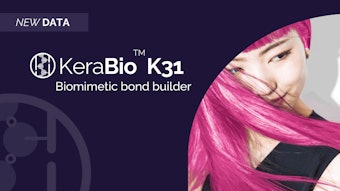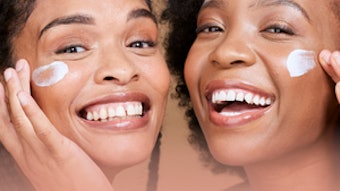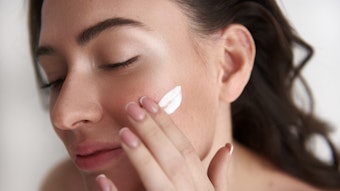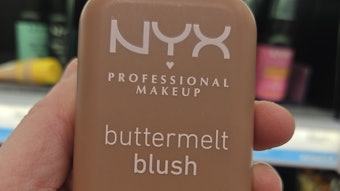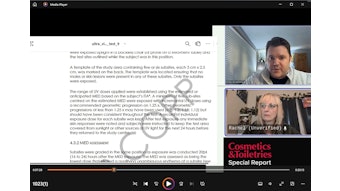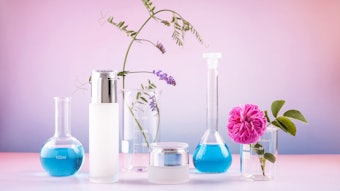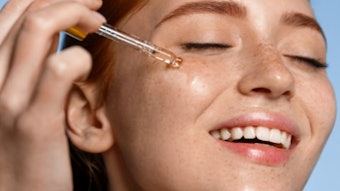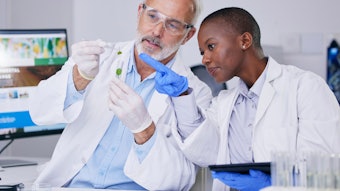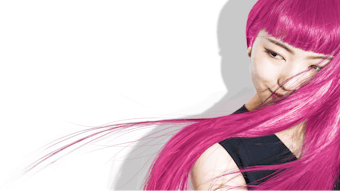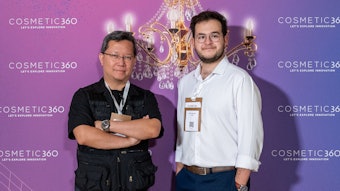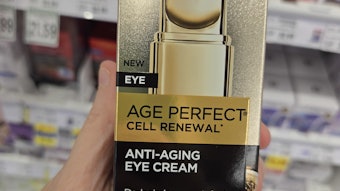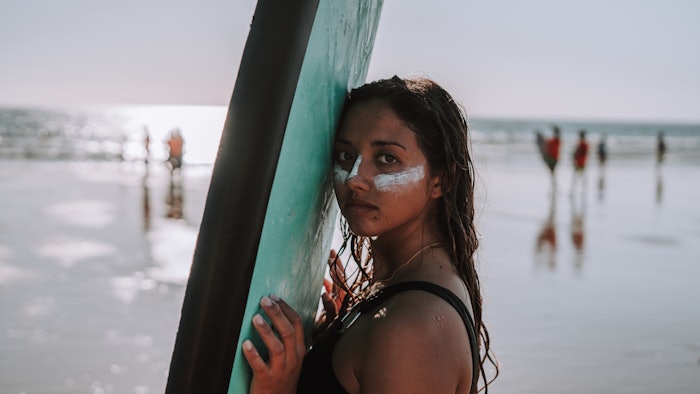
Australian sunscreens, considered the gold standard for UV protection, have come under fire in recent months over findings that some do not meet the levels of SPF protection claimed on their labels. Here, industry experts help us examine the current status of the crisis, highlight what went wrong and consider ways to move forward — plus, we learn how the U.S. avoided a similar crisis. We also ask whether the industry has reached its limits in terms of what's possible in sunscreens.
Testing protocol error: Also, the indicated test protocol followed the TGA Australian standard and states the erythemal assessment should take place 20 + 4 hr after irradiation. The actual testing schedule in the report revealed, however, that instead of testing for erythema the following day, as instructed, testing was performed two days later.
Potential conflict of interest with quality assurance sign-off: Finally, Ecclefield highlighted that the person who signed off on the report, according to that individual's LinkedIn profile, is an assistant to one of the C-suite level individuals at PCR.
Log in to view the full article
Australian sunscreens, considered the gold standard for UV protection, have come under fire in recent months over findings that some do not meet the levels of SPF protection claimed on their labels. Here, industry experts help us examine the current status of the crisis, highlight what went wrong and consider ways to move forward — plus, we learn how the U.S. avoided a similar crisis. We also ask whether the industry has reached its limits in terms of what's possible in sunscreens.
Sunscreen Labeling Crisis Recap
Let's start with a recap. Australian consumer group Choice reported in June 2025 that 16 of the 20 popular SPF 50 or 50+ sunscreens it had tested did not meet the the level of protection claimed on their labels. The biggest offender, Ultra Violette Lean Screen SPF 50+ Mattifying Zinc Skinscreen, only provided an SPF of 4. (See Choice's full list of the sunscreens tested here.)
Choice called on authorities, the Therapeutic Goods Administration (TGA) and the Australian Competition and Consumers Commission (ACCC), to investigate, which revealed that the product's base formula by Wild Child Laboratories was unlikely to provide protection beyond an SPF of 21. Since then, as of Oct. 24, a total of 21 products have been identified as having the same base formula, according to the TGA.
Of these 21 same-base-formula products, seven (including the Ultra Violette product) have officially been recalled as of Oct. 10. The remaining products have been paused or are under review. Wild Child told ABC Australia, in an Aug. 29 report, that the product was manufactured and tested in accordance with TGA regulations. The New Daily reported on Oct. 1 that Wild Child stopped making and supplying the base formula.
"The TGA is aware that each company adds different types and amounts of excipients (like fragrances and color tints) to the base formulation," the group wrote. "It is possible that the addition of excipients could increase or decrease the SPF of a sunscreen. The TGA is, nonetheless, concerned that the test results relating to [Ultra Violette] Lean Screen and the base formulation suggest that sunscreens made with the base formulation may not provide the claimed SPF."
Industry expert John Staton, scientific director at Australia-based SciPharm Pty., Ltd., agrees there could have been issues with the base formula. "Given the very significant difference in the results and the fact that they've been reconfirmed at a very low result around 4, I would suspect there's an inherent issue with the formulation itself."
He adds that this is very well-known with zinc oxide formulations. "They way they're processed and the type, the grade, of zinc oxide that's used has a huge impact," he explains.
"...There are [also] provisions in the standards in Australia, within our regulation, to vary [the core or base formula] slightly, ... you might have your hero ingredient that you put in ... and in effect, that's changing the formula. So you have to be very careful about what you're adding or subtracting from something that was tested."
He continues, "And I'm not entirely sure, but I have a feeling that a lot of these extrapolations have been run without immediately focusing on ... retesting their variant of the product they put on the market."
Notably, of all the recalled or paused same-base-formula products, only one appears in Choice's original list of 16 offenders. In other words, there are still at least 15 concerning sunscreen products to retest.
Behind the Scenes: Testing Mismatches
As the story unfolds, however, it has become clear that it's not just the base formula that's the problem. It's the testing behind it.
Indeed, eight of the 16 sunscreens flagged by Choice were tested by the same UK-based lab, Princeton Consumer Research (PCR), according to ABC Australia News. PCR reported product efficacies at levels well above the claimed SPF of 50 — ranging from SPF 61.7 to 73.6 — whereas Choice-commissioned results ranged from SPF 4 (Ultra Violette Lean Screen) to 52.2. Only two of the eight PCR-tested formulas met the SPF 50+ label claim.
In a report by ABC Australia news, Choice said the results were disappointing given Australia's reputation for having some of the world's best sunscreen standards.
"Despite doing rigorous testing of [Ultra Violette] the first time, we were so perturbed by the results that we decided to delay publishing and test a different batch of the Ultra Violette sunscreen at a completely different lab in Germany to confirm the results," Choice wrote. Those results came back with a similar SPF of only 5.
After further investigation and reports alleging questionable testing practices, the TGA expressed concerns over the reliability of SPF testing undertaken by PCR. The association notified all companies responsible for affected sunscreens and acknowledged that manufacturers may have obtained test results before knowing there were concerns.
The TGA also acknowledged that some testing labs may be more reliable than others and is considering whether to take regulatory action. As of this publication, the TGA has written to PCR Corp. regarding its concerns and reportedly has not received a response.
Delving Deeper: What the Lab Got Wrong
PCR did, however, provide a statement in an Oct. 1 interview with BBC, suggesting "external factors could account for SPF rating discrepancies." Examples given included manufacturing variability between batches, raw material differences, packaging, storage conditions, product age and in-market handling. "We can only speak to the data we generated on the samples we tested," PCR said.
Staton adds that time also has an impact. "What can happen at a manufacturing point may not be sustained during the shelf-life of a product. That's why you really have to have these stability studies."
But Brian Ecclefield, Founder and CEO of Validated Claim Support, believes there's more to the story. In fact, he started his company in 2018 after leaving PCR over alleged questionable practices.
Ecclefield has 16 years in the testing industry developing in vivo clinical studies to help brands build their product claim portfolios. He sat down with C&T to dig into PCR's testing report on the Wild Child formula, highlighting discrepancies in procedures and protocols, and underscoring what the lab appears to have gotten wrong (see the full interview here).
He noted three key pieces to the testing mishap puzzle:
- Missing sign-off and testing site mismatch: The testing report listed Manchester as the primary testing site, yet no one who signed off on the report is physically at that site. The only person at the Manchester site, the project supervisor, never signed the report. "This is exceptionally troubling," Ecclefield says.
Testing protocol error: Also, the indicated test protocol followed the TGA Australian standard and states the erythemal assessment should take place 20 + 4 hr after irradiation. The actual testing schedule in the report revealed, however, that instead of testing for erythema the following day, as instructed, testing was performed two days later.
"The fact that [the sunburn] had an extra two full days to heal is actually a prime reason why the SPF could be so far off between 4 and 50+. And this is also not acceptable under the current standards."
Potential conflict of interest with quality assurance sign-off: Finally, Ecclefield highlighted that the person who signed off on the report, according to that individual's LinkedIn profile, is an assistant to one of the C-suite level individuals at PCR.
"If that's the case, he has a direct conflict of interest with ownership," Ecclefield explains. "Also, a personal assistant, in my opinion, would not really qualify as somebody who can sign off on assurance for sunscreen testing; it's extremely intricate, as I'm sure you know."
Staton's assessment essentially agrees, to some extent. "What I've seen from the reports for the test lab [PCR] upon which a lot of marketers have relied (here we call them Sponsors, technically) are too consistent. And I've seen other bits of information ... where [PCR's] reports are not compliant with the meaning and the intent of the standard for which they're written."
He adds, "We already know that we're dealing with variability because we're dealing with human test volunteers ... but most [variables] are actually covered ... within the scope of the ISO standard." Of course, the standard must be followed to the letter to account for those variables.
"We have to isolate the question of the product and its performance from the lab and its performance," Staton notes. "I think there are two issues here, if not more, but certainly two, and they need to be unscrambled."
How the U.S. Dodged a Similar Sunscreen Scandal
According to sunscreen expert Uli Osterwalder, owner and principal of the consulting firm Sun Protection Facilitator GmbH, the U.S. avoided a similar sunscreen scandal last year (2024). He explain that for its survey highlighting "The Best Sunscreens of 2024," Consumer Reports applied the Australian Choice standards to retest 96 products and determine what percentage of the SPF value on their label they provided.
However, while the Choice standard classified sunscreens as "pass" if they met or exceeded the SPF on the label, or "fail" if the SPF results were lower than that on the label, Consumer Reports did not apply the same pass/fail classification. Rather, it changed its paradigm to award seals to 14 products as "recommended buys" — even though 94 out of 96 sunscreens had failed the SPF declaration during retest.
"Our ratings are developed from the average results of all the SPF and UVA tests for a sunscreen, as well as how much the average Consumer Reports-tested SPF varies from the SPF listed on the label," Consumer Reports stated in 2024.
In an article by WCPO ABC Cincinnati, Consumer Reports did concede that its studies found consumers may not get the protection they think they're getting with some sunscreens that claim an SPF of 30 or 50. "Our Consumer Reports-tested average SPFs are often lower than what you might see on a label," Health and Food Editor Trisha Calvo noted.
Osterwalder emphasizes that a scandal similar to what's happening now in Australia could have happened in the U.S., "but CR was smart enough to ignore the old pass/fail classification." He adds that in fact, the average SPF value of the retested products compared to the label was only 43% in the U.S. 2024 Consumer Reports study, while it was a higher 62% in Australian 2025 Choice report.
"So Consumer Reports did a smart thing," Osterwalder concludes. "They signaled the industry that there [was] something wrong with the performance of many sunscreens in the U.S., but [also] that there [were] still enough sunscreens worth putting on."
Have We Reached the SPF Limit?
So what are the implications of these findings?
"The recent Australian Choice study may well have opened Pandora’s box," wrote Marc Pissavini, Ph.D., sun research director and visiting professor of the faculty of sciences at the University of Montpellier, in a recent LinkedIn post. "Since then, everyone has added their own interpretation, blaming sometimes the product, sometimes the methods, the testing institute or even the authorities.
"But what’s really happening?" he continued. "[C]onsumers and marketing have pressured brands to promise ever-higher SPF values with less UV filters in order to have light textures. But is this scientifically reasonable?" he wrote. "In my view, we’ve reached the limits of what’s possible."
He explained that achieving high or very high SPFs (50, 50+) with only 5-10% of filters, especially inorganic ones, is simply impossible. "In practice, the maximum achievable ratio is around 2; for example, with ~25% filters, you can reach SPF 50–50+."
He also emphasized that ISO methods are reliable when properly applied. "Yes, in vivo SPF testing is variable," he added, "... but this variability does not explain away every inconsistent result."
Guidance to Move Forward
So how should the industry move forward? Pissavini advised:
• Use the ISO standards. They were validated and accepted, and they provide consistent and meaningful results.
• Set reasonable expectations. Sunscreens require sufficient amounts of filters to deliver robust protection.
• and Support the new ISO in vitro method, which will reduce variability and most importantly, prevent scientific bias.
For consumers, Pissavini wrote: "This study does undermine public trust to some extent, especially since Australia has long been viewed as the 'model student' in sun care awareness and regulation. "That said, it’s important to keep in mind that most products on the market do meet their claimed SPF levels. And even in cases where the actual protection falls slightly below the claim, it is still far better to apply sunscreen than to go without any protection at all."
Use guidance tools and watch for red flags: Staton adds that companies need to be careful of relying on numbers that don't seem "right" in the first place. "The use of in silico modeling will give you some guidance.
"There's also the approach of just trying the formulation on a few test subjects and getting feedback — and not racing through a full compliance test of 10 volunteers," he continues, emphasizing how in some publicly available PCR test documents, the firm tested 10 subjects on the same day.
"That, I'd go as far as to say is unethical because you're not getting your feedback loop on your first volunteers to know if they're being overexposed, or you don't know if they're being underexposed," he explains. "Accepting a 'target' given by the client and just testing that is not advisable and fraught with risk."
According to Staton, using a few test subjects can give you a guide as to where the real SPF number fits. "Anything that doesn't fit ... is a red flag to me." He continues, "that's what I've done lately. I've actually generated some spreadsheets which I'm now sharing with consultants and people who are evaluating reports from other laboratories just to make sure we don't go around in a déjà vu loop again.
"Because here we are, in a similar situation to AMA five or six years ago, where the likely outcome for Australian sunscreens is a potential directive of not being able to rely on certain test lab results."
Use results from multiple labs: Osterwalder highlights that while there are definitely justified questions about [PCR's] practice, "companies should not rely only on the results of one lab, and not on one method any more, since we have now valid alternatives that have been tested against the gold standard ISO 24444."
He also notes that in Europe, there is a Responsible Person (or company) who decides if the SPF results of one, two or three laboratories are reliable enough to substantiate the SPF claim.
"It is really ... the knowledge of your own product and the experience with certain laboratories that are the basis of such decisions," Osterwalder emphasizes. "Just ticking a box or [writing] new regulations are not solutions to avoiding sunscreen drama in the future."
TGA's List of the 21 Same-base-formula Sunscreens Paused, Canceled or Under Review
Following are the 21 same-base formula sunscreens highlighted by the TGA (as of Oct. 24). To see Choice's list of the SPF products that failed testing, and to what degree they failed, see the company website.
- Aspect Sun, SPF50+ Physical Sun Protection; AUST L 365276; responsible company: Advanced Skin Technology; voluntarily cancelled from the Register on Sept. 25, 2025; recalled.
- Aspect Sun, SPF50+ Tinted Physical Sun Protection; AUST L 389983; responsible company: Advanced Skin Technology; voluntarily cancelled from the Register on Sept. 25, 2025; recalled.
- Aesthetics Rx, Ultra Protection Sunscreen Cream; AUST L 364858; responsible company: Aesthetics Skincare Pty. Ltd.; voluntarily cancelled from the Register on Sept. 25, 2025; recalled.
- New Day Skin, Good Vibes Sunscreen SPF50+; AUST L 339406; responsible company: Anjo Partners; voluntarily cancelled from the Register on Oct. 1, 2025; under review by the TGA.
- New Day Skin, Happy Days Sunscreen SPF50+; AUST L 339819; responsible company: Anjo Partners; voluntarily cancelled from the Register on Oct. 1, 2025: under review by the TGA.
- Allganics, Light Sunscreen SPF50+; AUST L 346159; responsible company: Australian Cosmeceutical Group Pty. Ltd.; Goods under review by the TGA.
- Beauti-FLTR, Lustre Mineral SPF50+; AUST L 383583; responsible company: Daily SPF Pty. Ltd.; voluntarily cancelled from the Register on Sept. 29, 2025; voluntarily recalled.
- Found My Skin, SPF 50+ Tinted Face/Body Cream; AUST L 408261; responsible company: DNA Health and Wellness Pty. Ltd.; voluntarily paused supply; under review by the TGA.
- Ethical Zinc, Daily Wear Light Sunscreen; AUST L 333136; responsible company: Ethical Zinc Pty, Ltd.; voluntarily paused supply; under review by the TGA.
- Ethical Zinc, Daily Wear Tinted Facial Sunscreen (Dark); AUST L 384897; responsible company: Ethical Zinc Pty, Ltd.; voluntarily paused supply; under review by the TGA.
- Ethical Zinc, Daily Wear Tinted Facial Sunscreen (Light); AUST L 384897; responsible company: Ethical Zinc Pty, Ltd.; voluntarily paused supply; under review by the TGA.
- Endota, Mineral Protect SPF50 Sunscreen; AUST L 333138; responsible company: Ethical Zinc Pty, Ltd.; voluntarily paused supply; under review by the TGA.
- We Are Feel Good Inc., Mineral Sunscreen SPF50+; AUST L 409094; responsible company: Feel Good and Co. Pty. Ltd.; voluntarily paused supply; under review by the TGA.
- GlindaWand, The Fountain of Youth Environmental Defence Cream SPF50+; AUST L 392832; responsible company: GlindaWand Pty. Ltd.; voluntarily cancelled from the Register on Oct. 9, 2025; under review by the TGA.
- *Ultra Violette, Lean Screen SPF50+; AUST L 332788; responsible company: Grace & Fire Pty. Ltd.; voluntarily cancelled from the Register on Sept. 5, 2025; voluntarily recalled.
- Ultra Violette, Velvet Screen SPF50; AUST L 475518; responsible company: Grace & Fire Pty. Ltd.; product export only – never supplied in Australia; voluntarily cancelled from the Register on Sept. 5, 2025.
- People4Ocean, SPF 50+ Mineral Bioactive Shield Lightly Tinted Cream; AUST L 412979; responsible company: LaGaia Pty. Ltd.; voluntarily cancelled from the Register on Oct. 3, 2025; voluntarily recalled.
- McoBeauty, SPF50+ Mineral Mattifying Sunscreen; AUST L 420373; responsible company: McoBeauty; voluntarily cancelled from the Register on Sept. 2025; voluntarily recalled.
- Naked Sundays, Collagen Glow Mineral Sunscreen; AUST L 356754; responsible company: Naked Sundays; voluntarily paused supply. Goods under review by the TGA.
- Outside Beauty & Skincare, SPF 50+ Mineral Primer; AUST L 411860; responsible company: Outside Beauty & Skincare Pty. Ltd.; voluntarily cancelled from the Register on Sept. 26, 2025; voluntarily recalled.
- Salus, SPF50+ Daily Facial Sunscreen Broad Spectrum; AUST L 401588; responsible company: Salus Body & Spa Pty Ltd; voluntarily recalled.
